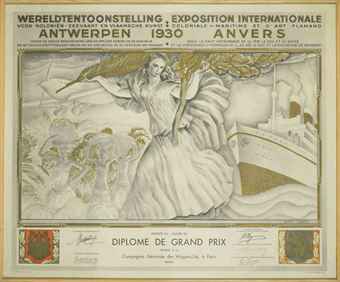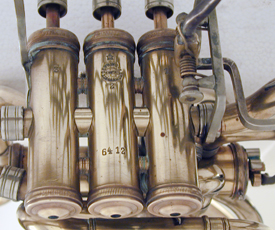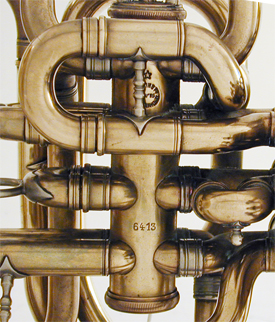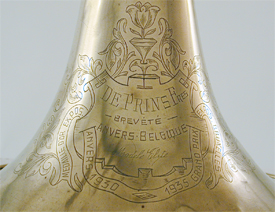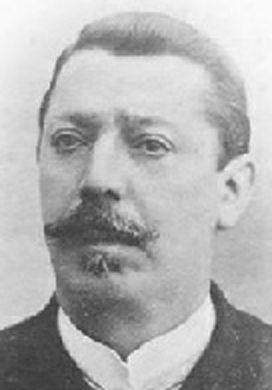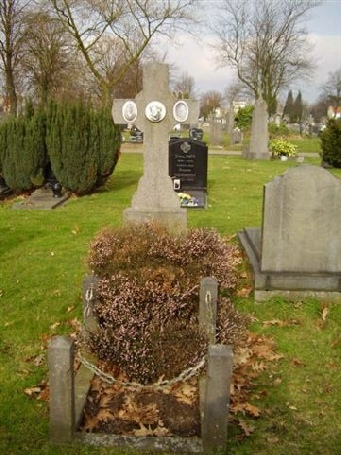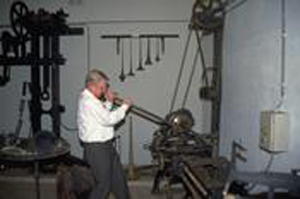| Label :
|
De Prins Fres Brevété Anvers Belgique Modele Elite Anvers 1930 <> 1935 Grand Prix |
|
Model:
|
Radio Wonder Hoorn, D.P nr. 105 (compensating
double) |
|
Serial Number [on valves]:
|
6412, 6413 |
|
Date of Manufacture:
|
1935 - 1945 |
|
Key(s):
|
F and B-flat |
|
Valves:
|
3 lever-operated pistons, 1 large rotory |
|
Bore:
|
1.170 |
|
Bell Flare:
|
single seam |
| ca.7.2 cm. |
|
|
Bell Diameter:
|
31.0 cm |
|
Base Metal:
|
brass |
|
Finish:
|
unlacquered |
| . (click on photos for larger view) |
|
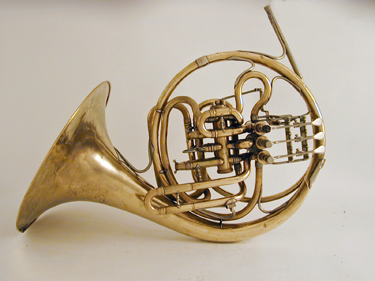 |
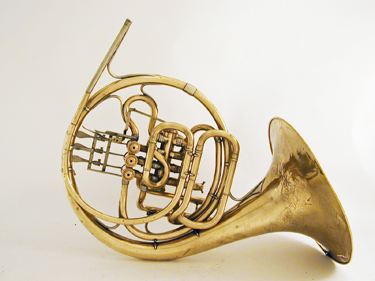 |
The 105 model is a compensating double horn with a large central rotor to make the valve slides shorter or longer when changing between the F to the B-flat sides. This is a horn of the so-called "walzenhorn" design which was of the Lehman-Chemnitzer patent similar to the horns popular in eastern European countries produced by Josef Lidl. A catalog from the World War II era describes it as Nr. 105 radio wonder hoorn, model D.P., zeer groote booring, in si b en fa, mekanieke verlenging of verkorten der coulissen: 2500 fr ["very large bore in B-flat and F, mechanical lengthening or shortening of the valve slides"]. The linkage to the central rotor is easily reversed to sit the horn in B-flat. |
|
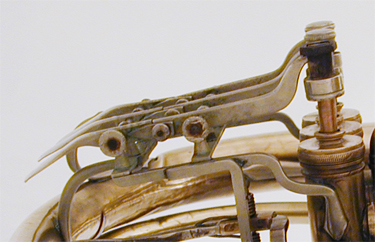 |
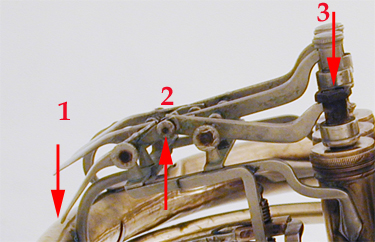 |
|
|
The workshop was founded in 1901 in Borgerhout (Antwerp) by Petrus De Prins (b. Mechelen, Nov 28 1857; d. Borgerhout - Mar 17, 1926). His son Karel joined him in the business at a young age. De Prins was an Antwerp agent for Mahillon and Van Cauwelaert. A catalog for the Dutch market, around 1910, shows several horn and alto horn models (called "stellahoorns" and "waldhoorns"). The horn shown as model 86 is a Mahillon model 412. Production was interrupted in 1914 for the duration of World War I. In 1918, production resumed in the workshop at the Lammekensstraat and the company was called "Gebroeders De Prins" operated by the founder's sons Karel, Gustaaf, and Louis De Prins. |
|
|
|
|
